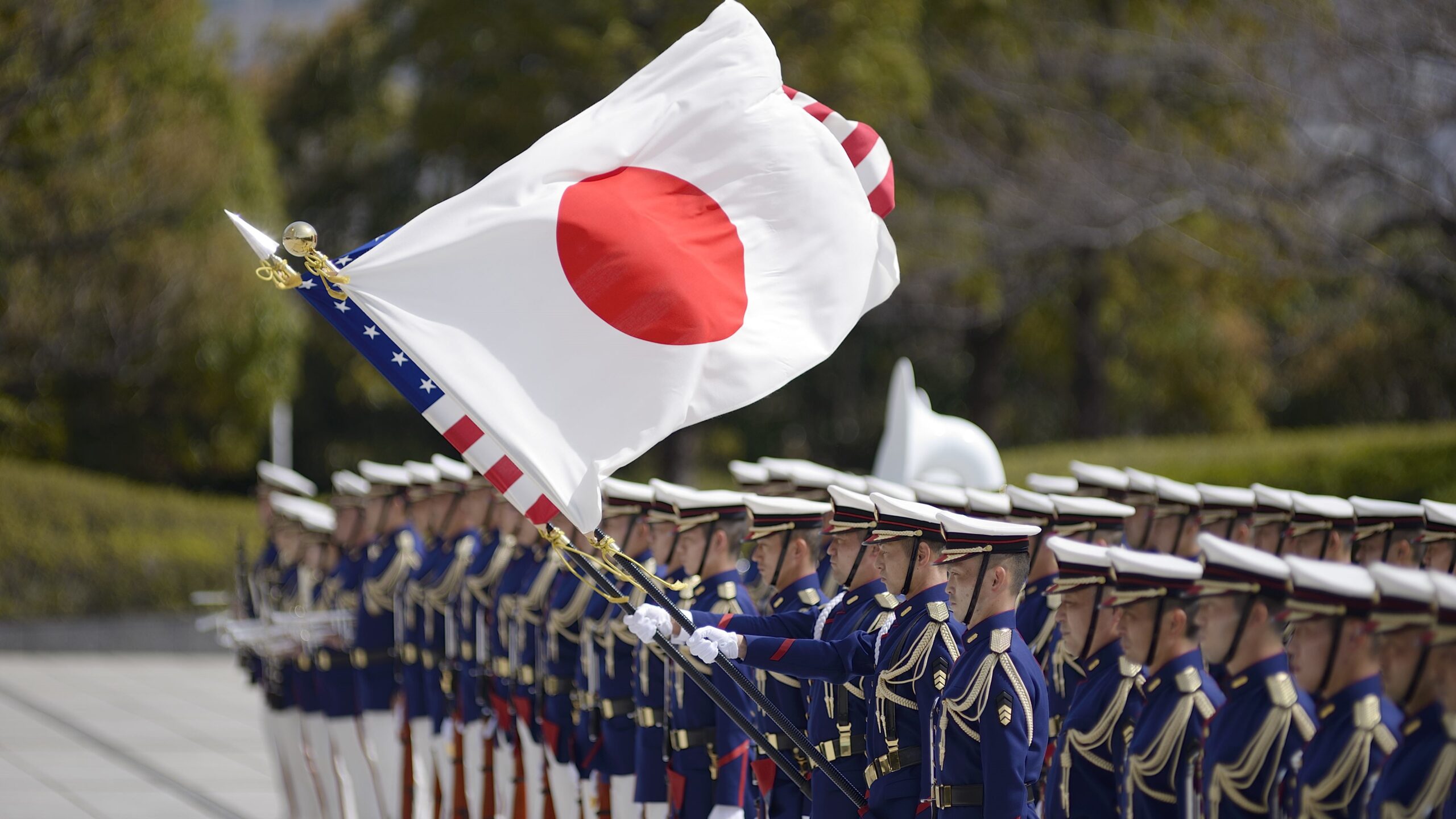
The flags of Japan and the U.S. are flown during an honor guard ceremony attended by U.S. Secretary of Defense Lloyd Austin and Japan Defense Minister Nobuo Kishi ahead of a bilateral meeting in Tokyo, Japan, on Tuesday, March 16, 2021. (David Mareuil/Anadolu/Bloomberg via Getty Images)
SYDNEY: Japan’s ruling Liberal Democratic Party has taken the extraordinary step of proposing to double the country’s defense spending over the next five years, with the goal of moving from the historic level of less than 1 percent of GDP spent on defense up to 2 percent.
The same document also called for the development of a “counterattack” capability that can target enemy military bases or command and control systems. If the ruling government does act on this recommendation — and it should be noted the LDP appears unlikely to lose power anytime soon — it would continue a push by the LDP away from Japan’s post World War II reluctance towards having a military capable of projecting power.
It is hard to ignore that the LDP plan comes as Germany is also moving away from its own post-WWII reluctance for military use. Shortly after Russia’s invasion of Ukraine, Berlin began providing lethal aid to Kyiv, and also approved a massive increase of roughly $113 billion to its defense budget, something almost unthinkable just months ago.
Now the LDP appears ready to have Japan make a parallel commitment, for many of the same reasons. In a sign of how much Japan has shifted from its earlier focus on protecting its islands to collective self defense. The document says that Ukraine has shown that no country can defend itself on its own in this current global geopolitical environment, said Rikki Kersten, honorary professor at the Australian National University’s Australia-Japan Research Center, in an interview.
“Look at how Germany, in particular, had to respond to this emergency in their backyard. They have had to, with very short notice, dramatically increase their budgets to meet the emergency. We would be irresponsible not to anticipate a similar emergency and act sooner,” said Kersten, who has reviewed the LDP document.
“The thing that leapt out at me in this document was the extent to which Ukraine is invoked to justify the need for dramatic changes in policy. So, if you just look at a few of those justifications, it’s not only does Japan face an unprecedented threat environment in its own regions, but now we can see the liberal international order is under threat,” she said.
The LDP plan gets fairly specific about at least one area of weaponry that will need to be the target of this increased spending — missile defense, particularly systems aimed at tackling the difficult threat of hypersonics, Kersten said.
“What we’ve seen unfolding in Russia’s attack on Ukraine is the emergence of types of technology that require different means of meeting the threat. And what that means, in the main, that’s hypersonic weaponry, but also other types of missile technology that can’t be intercepted through conventional means,” she said.
That will have implications for Japan’s alliance with the US “because that’s where the technology is going to come from.” In addition to missile defense, the LDP document talks about drones, artificial intelligence, cyber, human intelligence and space.
In broader national security terms, this LDP document was released in anticipation of a coming strategy document Japan is expected to release in December, Kersten said.
There is a chance that the LDP plan will be criticized during the upcoming elections for the Japanese upper house, Kersten noted, but the fact that this spending boost is being bruited before the election may indicate that the ruling party is confident the people will support this major shift in Japanese politics and strategy.






















